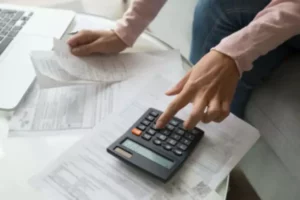Content

In determining the net income (profits) from an activity, the receipts from the activity must be reduced by appropriate costs. Depreciation is any method of allocating such net cost to those periods in which the organization is expected to benefit from the use of the asset. Depreciation is a process of deducting the cost of an asset over its useful life.[3] Assets are sorted into different classes and each has its own useful life. Depreciation is technically a method of allocation, not valuation,[4] even though it determines the value placed on the asset in the balance sheet. The kinds of property that you can depreciate include machinery, equipment, buildings, vehicles, and furniture. If you use property, such as a car, for both business or investment and personal purposes, you can depreciate only the business or investment use portion.
- These tips offer guidelines on depreciating small business assets for the best tax advantage.
- Carl specializes in providing tax services including planning, compliance and representation before the Internal Revenue Service and other agencies.
- Real estate can also experience economic depreciation when the market value of the property decreases.
- The most common reason for an asset to not qualify for depreciation is that the asset doesn’t truly depreciate.
Jingxian works to facilitate a streamlined and efficient audit approach that aims to minimize hassles to the client and maximize audit value. Jingxian also has experience identifying, assessing, observing, and testing internal control procedures and compliance with laws, regulations, and grant requirements. Chanh started his career in tax working for a privately held multibillion-dollar company.
Dynamic investment and financing under personal taxation
On a similar exchange, gains are deferred and reduce the cost of the new asset. For example, after receiving a $12,000 trade‐in allowance on a delivery truck with a net book value of $10,000 and paying $89,000 in cash for a new delivery truck, the company records the cost of the new truck at $99,000 instead of $101,000. The $99,000 cost of the new truck equals the $12,000 trade‐in allowance plus the $89,000 cash payment minus the $2,000 gain.

Some systems specify lives based on classes of property defined by the tax authority. Canada Revenue Agency specifies numerous classes based on the type of property and how it is used. Under the United States depreciation system, the Internal Revenue Service publishes a detailed guide which includes a table of asset lives and the applicable conventions. The table also incorporates specified lives for certain commonly used assets (e.g., office furniture, computers, automobiles) which override the business use lives.
Depreciable vs. Non-depreciable Assets: Where Should I Invest?
For example, consider a $140,000 tractor purchased for use on the farm with an expected useful life of 12 years and an expected remaining (salvage) value of $20,000 at the end of those 12 years. Using straight-line depreciation, this results in depreciation expense of $10,000 per year for the tractor over its useful life. If you paid cash for this tractor, $140,000 would flow out of the business at the time of purchase and $20,000 would flow back into the business upon its sale at the end of 12 years. Neither of these transactions would affect the totals on the balance sheet and neither would represent an expense or income.
Get stock recommendations, portfolio guidance, and more from The Motley Fool’s premium services. Volatility profiles based on trailing-three-year calculations of the standard deviation of service investment returns. All features, services, support, prices, offers, terms and conditions are subject to change without notice. If your total acquisitions are greater than $2,700,000 the maximum deduction begins to be phased out.
Resources for Your Growing Business
Residential rental properties are depreciated over the course of 27.5 years, while commercial buildings are appreciated over 39 years. Improvements to property, such as roads and sidewalks, can also be depreciated over 10, 15, or 20 years, depending on the specific asset. However, as the land itself does not “wear out,” it typically cannot be depreciated. To calculate composite depreciation rate, divide depreciation per year by total historical cost. To calculate depreciation expense, multiply the result by the same total historical cost.
Typically, any of the above listed items can be immediately expensed if their cost is under $500. The Code of Federal Regulations (CFR) is the official legal print publication containing the codification of the general and permanent rules published in the Federal Register by the departments and agencies of the Federal Government. The Electronic Code of Federal Regulations (eCFR) is a continuously depreciable assets updated online version of the CFR. 10 × actual production will give the depreciation cost of the current year. Suppose an asset has original cost $70,000, salvage value $10,000, and is expected to produce 6,000 units. Generally, if you’re depreciating property you placed in service before 1987, you must use the Accelerated Cost Recovery System (ACRS) or the same method you used in the past.
Scott uses his expertise to assist clients navigating through the complex web of rules and regulations to maintain compliance and improve performance and efficiency. He values working closely with clients not only during the audit period, but over the course of the entire year to help them through various challenges that may arise. Depreciable property is any asset that is eligible for tax and accounting purposes to book depreciation in accordance with the Internal Revenue Service’s (IRS) rules. Depreciable property can include vehicles, real estate (except land), computers, office equipment, machinery, and heavy equipment. If the same $140,000 in cash were invested in land, the initial transaction would look very similar to buying a tractor. Total assets, liabilities, and equity on the balance sheet would remain the same.
- Susanna has been in the accounting profession since 1998 and specializes in providing audit and tax services.
- Patty has provided tax and accounting services to nonprofits for over 30 years.
- After you set it up, it’s placed in service, whether or not you regularly use it after setting it up.
- All depreciable assets are fixed assets but not all fixed assets are depreciable.
- It is equal to acquisition cost of the asset, minus its estimated salvage value at the end of its useful life.
Things like trucks, computers, desks, warehouses, and machinery all have lifespans. These tangible assets are all bought to serve a business purpose, and as they age, the less effective they are at what they do and the less value they have. Under Section 167 of the Internal Revenue Code, a taxpayer is eligible to claim compensation for loss in the value of a depreciable asset. (5) Gains and losses arising from mass or extraordinary sales, retirements, or other dispositions must be considered on a case-by-case basis. There are several methods for calculating depreciation, generally based on either the passage of time or the level of activity (or use) of the asset. The depreciable amount (cost less residual value) should be allocated on a systematic basis over the asset’s useful life [IAS 16.50].
